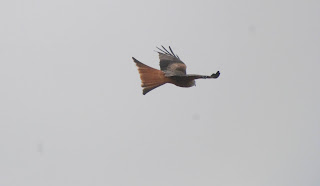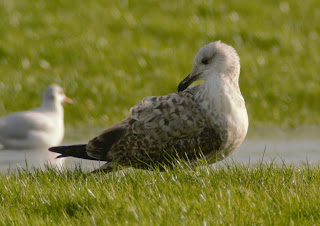From the fenlands we look eastwards not to a forest but the forest and the Brecks - a bewildering mosaic of flinty fields, Beech rides, sandy warrens, expansive blocks of brushy conifers and heaths of gorse and bruised purple heathers. The late winter pilgrimage provides birders with a peek into the displays of some enigmatic scarcities.
The golden globe rose above the horizon, burning through the blackened perpendicularity of poplar plantations as I swung off the Fen and up the imperceptible incline into the woods. The dawn chorus elongated into a freshly laundered blue sky morning and a long awaited stroll along tbe river was full of bird song. The soggy riverside soils starving roots of Oxygen. Poplars toppling year on year to leave a stump ridden no mans land of tiring forest, just enough to hold the Lesser Spotted Woodpeckers for another few years and they confided early today, with little wait.
What a cracker this little bird is, I will miss them when they're gone - and they will go I fear. A meander back across the heathy ride was serenaded by 3 Woodlark, beautiful cascading song all around.
And as the lark rises so must the hawk, to the woods once more, for the mornings displays had begun.
Dragging myself away from Goshawks is always difficult but as the action peetered out it was time to move on. Through the beeches the subtle soft ticking of Hawfinches gave away their presence, timid and flighty they showed briefly but further out beneath the hornbeams in the paddock many more picked through the grass and leaf litter. I watched a pair displaying, something I had not seen since teendom when Jono and I found a pair in suburban Knavesmire Woods on the edge of York Racecourse. An intricate and subtle dance of slow and mirrored postulations of feeding, odd bows and head movements culminating in a frozen kiss, huge beak tips gently touching before being broken apart by feisty competitors.
A late lunch in Thetford allowed for a check of the rooftop gulls at the tiny tip. Two likely looking adult Caspian Gulls showed between showers, although I didn't get to check the full primary pattern to be absolutely certain of the i.d
With the afternoons still short there was not a long vigil at Wicken before Harriers started to arrive to roost 3 male and 2 ringtail Hen Harriers the highlight, including a male who appeared to have taken to a gloomy tree roost in the hastening gale.

























